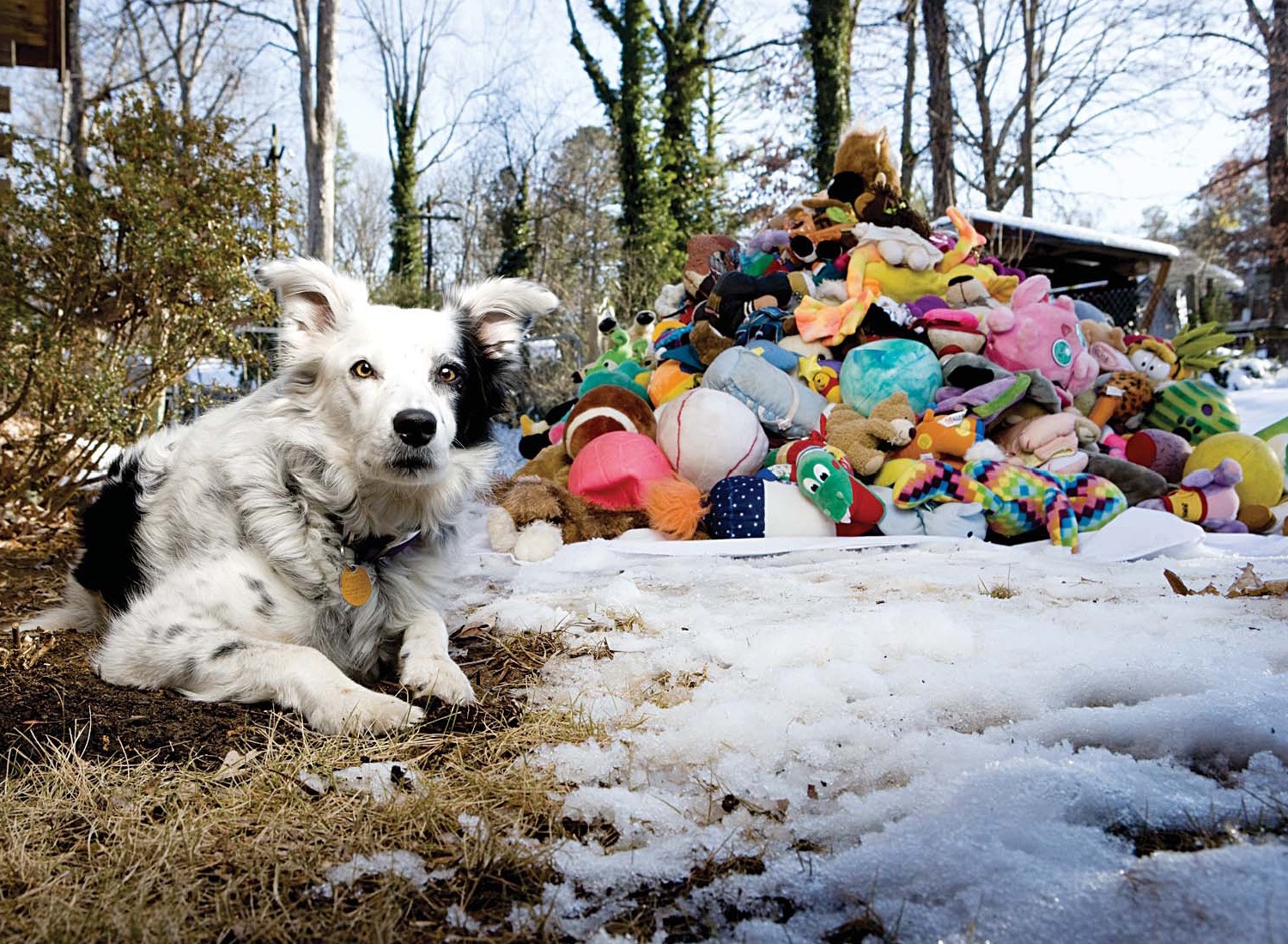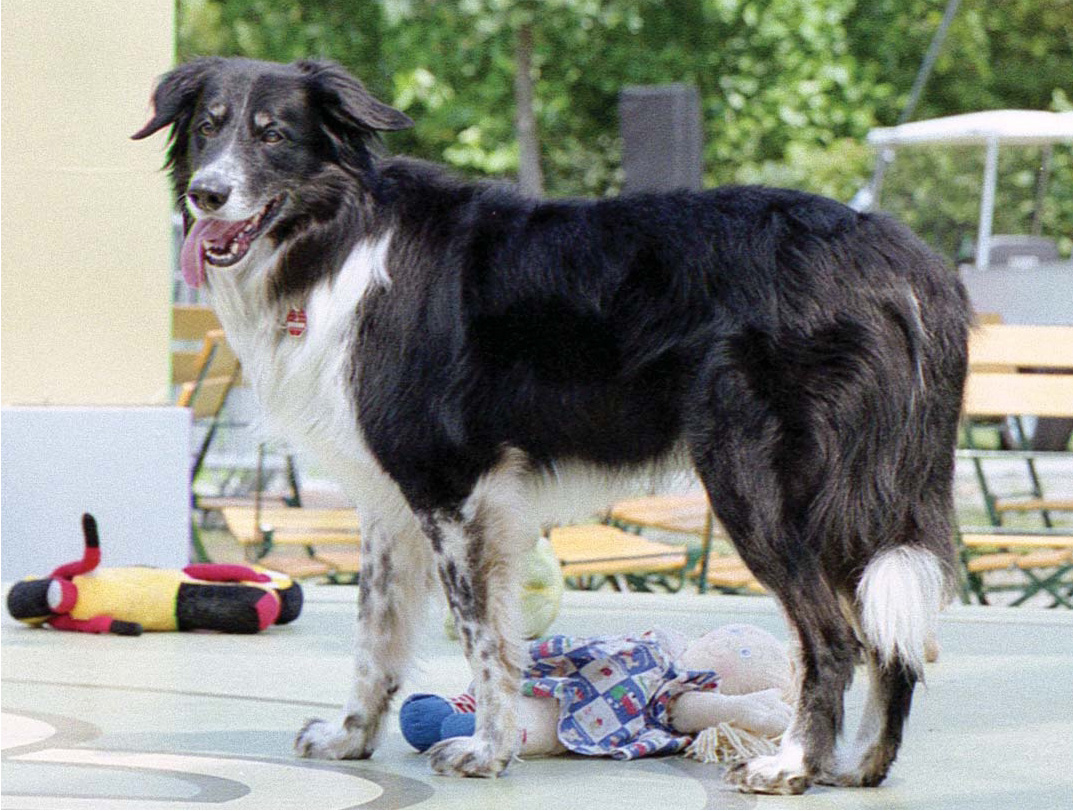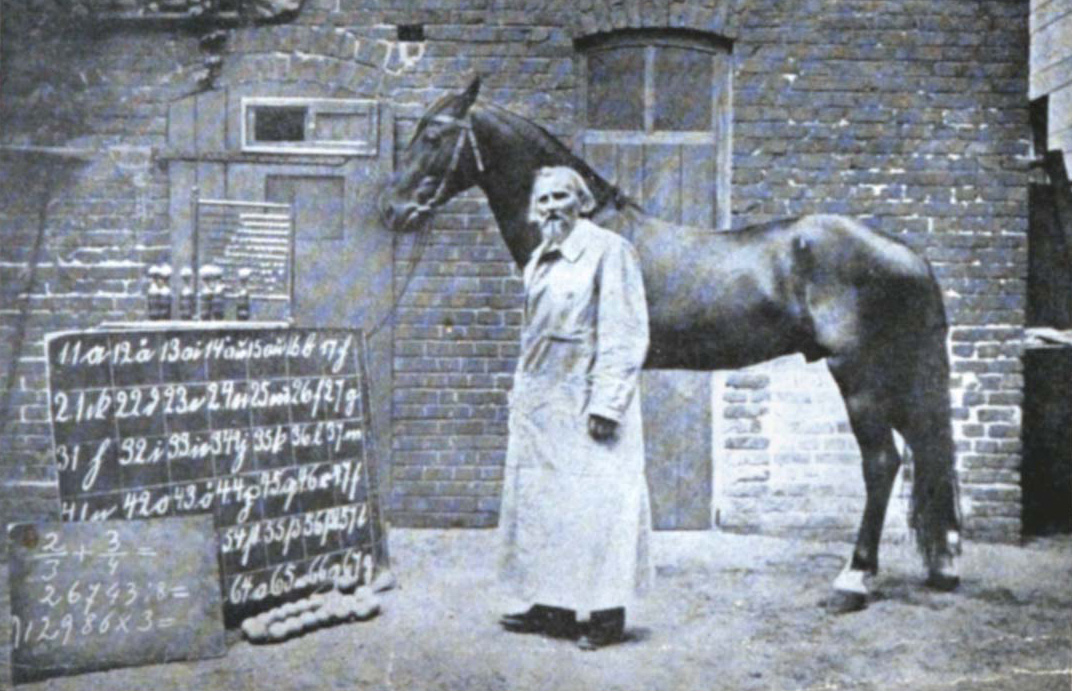Chaser (18 page)
Authors: John W. Pilley

By the time Chaser was ten months old, I was no longer able to keep all the objects in her flock straight in my own mind. I frequently needed to look at the name written on a toy if we hadn't played with it in a while. But Chaser had the proper noun names of the more than three hundred objects in her flock, along with mental images of each object, lodged securely in her long-term memory.
In his critique of the Rico study, Paul Bloom granted that Rico could have more than two hundred object names in his long-term memory. But because Rico's knowledge of these object names was tested only by asking him to fetch the objects, Bloom questioned whether Rico understood that an object's name referred to the object apart from this one action.
Bloom noted that children learn that “words are symbols that refer to categories and individuals in the external world.” He offered the example of the word “sock,” which “even one-year-olds appreciate . . . refers to a category, and thereby can be used to request a sock, or point out a sock, or comment on the absence of one.” If Rico treated the sound “sock” only as a one-word signal to “bring-the-sock,” then his correctly fetching the sock would “have nothing to do with human word learning.”
Bloom was touching here on the fact that children acquiring their first language achieve both referential understanding (knowing what a particular word refers to) and combinatorial understanding (knowing that there are different kinds of words, such as nouns and verbs, that can be put together in many different ways). Although they aren't conscious of it, combinatorial understanding brings children into the realm of grammar, of syntax and semantics. Syntax is the set of rules, which vary language by language, for putting words together in phrases and sentences, such as the command “Fetch the sock.” Semantics is about how the meaning of a phrase or a sentence depends on those rules.
Aware of Bloom's critique, Kaminski and her coauthors reported the anecdotal evidence of Rico's owners that he could do more than “fetch the sock”: he could also “put an item into a box or . . . bring it to a certain person.” But Kaminski et al. acknowledged that they didn't test Rico for these abilities, and Bloom very reasonably said this created doubt about Rico's having referential understanding of any of the object names he knew. Rico might well have learned an association between all the object names and fetching the objects, but no more than that, Bloom argued.
When Chaser was eight months old, I began informally testing her ability to combine object names with more than one command, and to understand independent meanings for names and commands that I paired at random. In effect this meant testing Chaser's capacity for combinatorial understanding of two elements of syntax: object name and action, or noun and verb.
Chaser already knew how to take an object in her mouth, nose it, or paw it on command. I took three newly learned objectsâWise Owl (a stuffed owl with oversize eyes), Punt (a small stuffed football), and Mallard (a stuffed duck)âthat I had never asked her to take in her mouth, nose, or paw. I assigned each object and each command a separate number, and then paired them at random.
Wise Owl, Punt, and Mallard were on the living room floor a few inches from each other. With a list of my random pairings of toys and verbs in my hand I said, “Chaser! Take Punt.” She immediately picked up Punt and looked at me with her tail wagging, pleased to have the plush little toy in her mouth.
“Good dog!” I said. We played with Punt briefly, and then I replaced it on the floor with Wise Owl and Mallard. I glanced at the next random pair on the list and said, “Chaser! Take Mallard.” In a flash she had Mallard in her mouth and was squeaking it happily.
When Mallard was back on the floor with the other toys I said, “Chaser! Nose Punt.” Chaser nosed Punt, rolling it across the living room floor, and she ran after it to nose it again, rolling it further, her tail wagging vigorously. This was fun!
Random pair by random pair, I asked Chaser to take, nose, and paw the three toys in different combinations. She made one error in trials of fourteen random combinations, pawing Mallard when she should have pawed Wise Owl. In other informal tests over the next few months, always with objects that I hadn't previously asked her to take, paw, or nose, her error rate quickly dropped from one or two mistakes per test to zero. After that she never made a single error.
This was strong evidence of referential understanding of independent meanings for two elements of syntax. Because I always tested her with newly learned objects that I'd never before asked her to take, paw, or nose, the evidence also showed that Chaser, just like children, could understand novel combinations of two-word phrases. Double-blind testing was necessary to make the evidence incontrovertible, but by the time Chaser was a year old I had no doubt that it would do so.
Bloom's emphasis on children's ability to learn that words can refer to categories of things in the world was important for another reason. Words that refer to categories are common nouns, whereas names are proper nouns that are meant to refer to a particular thing, object, place, or individual. One-to-one associations are sufficient to understand what proper nouns refer to, but common nouns involve what linguists call one-to-many associations, or mapping. And understanding how a proper noun and one or more common nouns can refer to the same thing, place, or individual, like a toy named Uncle Fuzz, involves many-to-one mapping.
Along with many other animals, dogs have some instinctive categories, such as male or female, food or not food, and dog or not dog. Dogs and many other animals can also acquire understanding of categories that are not instinctive, such as categories of visual and auditory stimuli that define the appearance and sound of dogs, other animals, or people. Bloom was skeptical about Rico's referential understanding of a common noun like “sock” because no one had ever shown that dogs (or any other animals) can form categories identified by words. The ability to generalize a single word across an entire category of things, as linguists put it, is one of the most important stages in childhood language learning and one of the most important indicators of higher cognitive function.
I began teaching Chaser common nouns during her first days with Sally and me. When Sally and I trained Chaser to “go to grass” if she heard a car coming, we did this in many different spots around our neighborhood. I also asked her to “go to grass” on our walks when there wasn't a car coming. She soon learned that “grass” could refer to grassy areas anywhere. Likewise she learned that “car” meant a vast array of vehicles of different sizes, including our own, which could be moving or stationary. On walks I also often asked Chaser to “go to trash can.” Because of city rules, the trash cans in our neighborhood all looked alike. Or I asked her to “go to tree,” based on the shared physical characteristics of trees, despite one tree's often looking very different from another in various ways. “Stick” was another common noun I taught her early on, followed by the ability to distinguish a “big stick” from a “small stick.”
The most abstract common noun category Chaser learned in her first three years of life was that of “toy.” She began learning the difference between toy and non-toy early in her first year, once she understood the meaning of “no.” We always left several toys, including chew toys, out on the floor for her, rotating the toys with those stored in Rubbermaid containers. However, we didn't want Chaser mouthing or chewing normal household objects such as shoes or purses that might be left lying around, or things that tend to wind up on the floor now and then such as towels or wash rags. To handle that I put four objects that belonged to Sally and/or me on the floor in the living room in front of the television with Chaser watching me. If the object was Sally's I held it up and said, “Chaser, this is Nanny's. No play. No play. This is Nanny's.” If the object was mine I identified it as “Pop-Pop's.”
Each time I identified an object this way, Chaser moved back a little as if to say, “I know that.” Sally and I left the objects on the floor in the living room for several months. They got knocked around, or picked up when we were cleaning, but I always put them back on the living room floor in front of the television. Chaser quickly learned what she could and could not play with, and there were only a few instances of Chaser's chewing on a shoe or a belt. Whenever she did, one or two corrections with “No, Chaser” were enough to train her not to chew on it again. After that I could put down new objects that I identified with the “no play” label and she would never touch them at all.
Toward the end of Chaser's first year I built on this early obedience training to teach the difference between toy and non-toy. I took items that looked like many of Chaser's toys but that belonged to Sally or me and had previously been stowed out of reach or out of sight, such as little stuffed animals or other mementos. I held them up and said, “Chaser, this is Nanny's; no toy, no play,” or “Chaser, this is Pop-Pop's; no toy, no play.”
Again it took only a few corrections, this time with “No, Chaser; no toy, no play,” for Chaser to leave these objects alone on the floor. And she could soon reliably fetch a toy from a group of objects that included toys and non-toys with shared physical characteristics. She successfully distinguished between toys and non-toys based on their functional characteristics. Toys were objects she was given to play with, and non-toys were everything else. That meant I did not have to say “no toy” for every object that Sally and I wanted her to leave alone. Chaser knew that only objects I introduced by pointing to them and saying “Chaser, this is ____” were toys. Anything else was a non-toy.
As Sally and I celebrated Chaser's first birthday, I was pumped up about her progress with proper nouns, common nouns, and combining nouns and verbs. With more work in all three areas, I felt sure there would be some very powerful findings to publish.
In the meantime I was excited, and a little nervous, about a demonstration by David Johnson that Chaser and I were going to attend at Wayne West's farm in two weeks. It would be our first visit to Wayne's since the previous November, when the ornery ewe charged Chaser and head-butted her onto the ground. How was Chaser going to react to seeing sheep again?

SEBASTIEN MICKE, PARIS MATCH
Â

SUSANNE BAUS AND WITOLD KRZESLOWSKI
Â

COURTESY OF THE NEW YORK PUBLIC LIBRARY